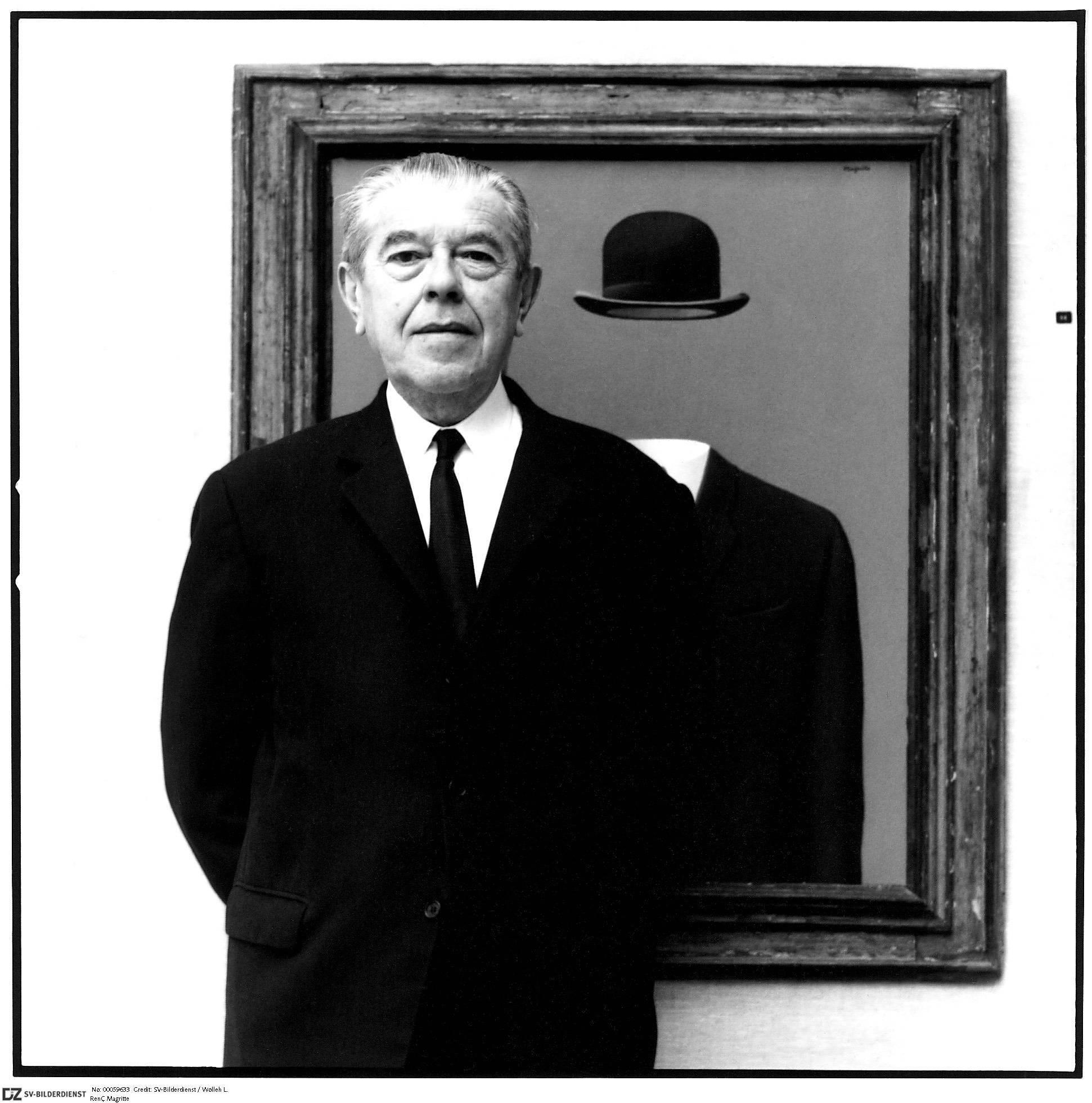
Who is René Magritte?
The surrealist movement would not be the same without René Magritte. Unlike other surrealists at the time who were painting in the “automatic” style guided by carefree intuition, Magritte had a more precise, conscious approach to his paintings. He is best known for depicting ordinary objects and people in unexpected contexts and creating optical illusions within his paintings.
Although Magritte didn’t gain widespread appeal until his 50s, today his paintings are highly sought after and continue to increase in value. Just recently, L’Empires des Lumières sold for $79.8 million at Sotheby’s, the most expensive piece sold by the artist. L’Empires is one of 17 variants, which have “performed extremely well” at auction according to Melanie Clore, co-founder of the Clore Wyndham gallery in London.
In total, Magritte’s work has generated nearly $500 million at auction, with an average cost of $290,000. His surrealist paintings produced towards the later parts of his life sell best, typically going for $1 to $10 million. Earlier drawings, sculptures, and photographs sell for less; for example, he sold 640 drawings for an average of $170,000.
| Born | November 21, 1898 |
| Nationality | Belgian |
| Died | August 15, 1967 |
| Mediums | Painting, sculpture |
| Movements | Surrealism, Pop Art, Minimalism, Conceptualism |
While little is known about René Magritte’s early life, it was certainly defined by the tragic suicide of his mother when she drowned herself in the River Sambre. Magritte’s mother had a long battle with her mental health, which art critics believe influenced Magritte’s obsession with blending reality and fantasy. Born in Lessines, Belgium to a wealthy manufacturer father, Magritte pursued the arts from a young age and studied at the Académie des Beaux-Arts.
Magritte’s Artistic Style
Throughout his career, Magritte experimented with many different styles of artwork that reflected his internal emotional state and the external events of the world. For example, during his “Renoir Period”, he reverted to an impressionist style to renounce the violence and ugliness of the war, while his “Vache” period poked fun at his contemporaries and had a more abrasive style with bulkier brushstrokes. His more refined surrealist paintings are what sell best, however, and what Magritte is most known for.
Magritte’s surrealist style is characterized by mystery, humor, starkness, and emptiness. His paintings depict objects where they should not be–for example, an apple floating in front of a man’s face in The Son of Man, or a train emerging from a fireplace in Time Transfixed. His artwork evokes mystery and makes the viewer ask, “why?” According to Magritte, “Everything we see hides another thing,” which was his way of saying that art and objects have multiple, masked meanings with subjective interpretations. Magritte’s art challenges us as the viewer and forces us to rethink our reality.
Featured Works
The Son of Man (1964, oil on canvas)
Arguably Magritte’s most famous and recognized work, The Son of Man sold for $5.3 million back in 1998 at Christie’s. Magritte painted many figures whose faces were obscured by random, ordinary objects.
The Treachery of Images (1929, oil on canvas)
On display at the Los Angeles County Museum of Art, this early piece features a pipe with the words “This is not a pipe” in French. The paradox of the image and the words alters reality the way Magritte intended.
L’Empire des Lumières (1961, oil on canvas)
Recently sold at auction, L’Empire is the most expensive work sold by the artist, nearly tripling his previous record. Bidding began at $40 million and was sold to Alex Branczik, Senior Director at Sotheby’s.
René Magritte’s Market
According to Art Market Monitor, Magritte’s work has steadily increased in popularity since the latter half of the 20th century, and he remains a prominent leader in the surrealist movement. With his most recent sale of L’Empire des Lumières, which sold for $79.8 million, one can imagine that the value of his work will only increase, especially as Sotheby’s prioritizes his work. His previous highest sale was for Le Principe du Plaisir (1937), which sold for $26.8 million at Sotheby’s.
Some of Magritte’s lesser-known, but still sought after work includes his drawings and sculptures; These pieces will typically go for several hundred thousand dollars.
Top Collections & Exhibitions
The Fifth Season
May 19 – Oct 28, 2018
Featuring more than 70 artworks from the 1940s to the 60s, this exhibition in the SFMOMA held some of Magritte’s most famous works, including The Son of Man and The Happy Donor. It presented Magritte’s ability to juxtapose reality and fantasy, and his deft understanding of paradox and playing with perspective.
The Magritte Machine
Sep 14, 2021 – Jan 30, 2022
The title of this exhibition at Thyssen-Bornemisza National Museum in Madrid, Spain referred to the repetitive, almost obsessive themes found in Magritte’s work. It was a unique exhibition because it showcased Magritte’s photographs and amateur films, which have rarely been seen by the public.
Museé Magritte Museum
Ongoing
Located in Brussels, Belgium, this museum is home to the largest collection of Magritte’s artwork, and features some of the more obscure work Magritte is lesser known for. This includes pieces from his “Vache” period, as well as drawings, sketches, and some of his early impressionist paintings.